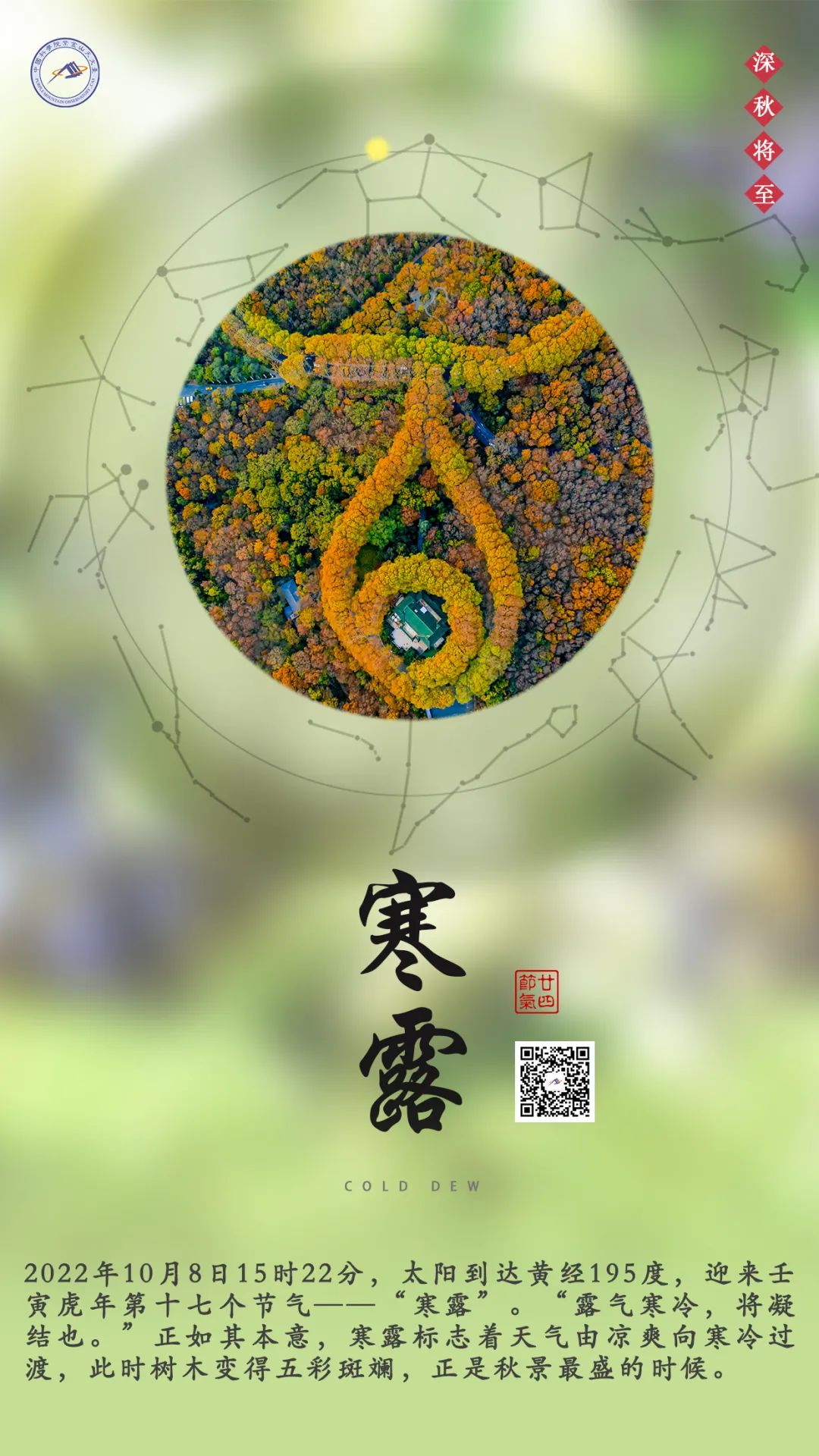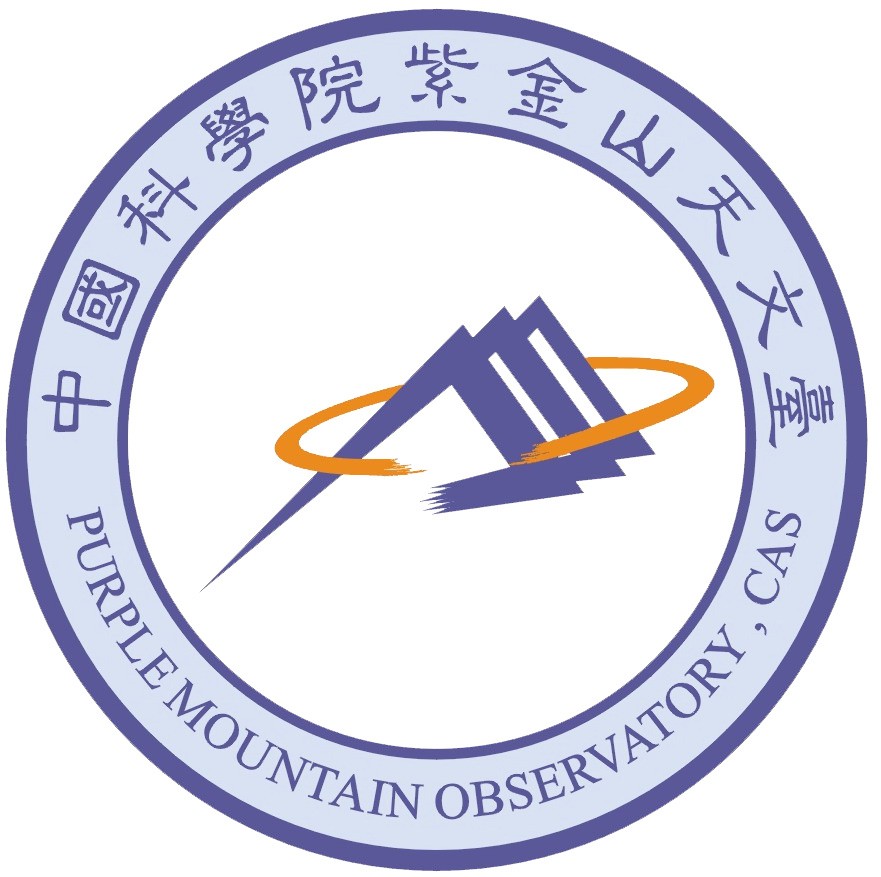“九月寒露白,六关秋草黄。”《中国天文年历》显示,10月8日15时22分迎来2022年“寒露”节气。

天象预报
寒露——霜降
太阳
在室女座运行。目前太阳活动性不强,太阳正面有数群小黑子,可通过带减光的望远镜观测。
月亮
10月18日下弦月,与双子座中的北河二、北河三近似排成一条直线,午夜后从东北方向升起。
水星
在室女座顺行。10月9日,水星西大距,日距角为18度,日出之前可以在东方的低空观测。
金星
在室女座顺行。10月23日,金星上合日,之后由“启明星”变为“长庚星”,年底左右将闪耀在黄昏后的天宇。
火星
在金牛座顺行。亮度逐渐增加,夜晚21时左右升起,黎明前都可以观测。
木星
在双鱼座逆行。入夜后,明亮的木星即从东方升起,整夜都可以观测。
土星
在摩羯座逆行,10月23日土星留,之后转为顺行。入夜后出现在东南方夜空,后半夜从西南方落下。
小知识

水星是离太阳最近的行星,轨道半长轴约为5800万千米(0.39天文单位)公转周期约88日。水星的轨道偏心率达到0.2056,轨道倾角相对黄道为7°,都是八大行星中最大的。较大的偏心率使得水星在近日点和远日点离太阳的距离分别约为4600万千米(0.31天文单位)和7000万千米(0.47天文单位),因此从地球上看去,水星在西大距或者东大距时,与太阳的角距离在17.9°至27.8°之间。
水星也是太阳系中体积和质量最小的行星,它的平均直径为4880千米,是地球的0.38倍,质量是地球的0.055倍。水星的平均密度为5.43g/cm3,在4颗类地行星中仅次于地球(5.52g/cm3),如果忽略重力压缩效应,那么水星的密度将是最大的。
水星的椭圆形轨道相对于背景星空是缓慢旋转着的,这种现象被称为近日点进动。但是在19世纪,天文学家精密的观测及计算表明,水星近日点进动的观测数据与经典力学的理论计算之间存在一个虽然微小但很确凿的偏差。去除其他行星的引力摄动及太阳的扁度等因素之后,仍有约每100年 43″——相当于圆周的十万分之三的进动无法解释。这道难题直到1915 年才由爱因斯坦的广义相对论所解决, 成为广义相对论的三大经典验证之一。
The Cold Dew

The seventeenth solar term of 2022, Cold Dew(Hanlu in Chinese), falls on October 8th at 15:22(Beijing Time), when the longitude of the sun reaches 195°. From Cold Dew, the weather turns from cool to cold. During this time, the forest becomes colourful, creating the most splendid autumn scenery of the year.
Astronomical Forecast
Cold Dew——Frost's Descent
⊙
The Sun
The sun travels in Virgo. Currently, solar activity is low, with a few groups of sunspots on its surface. They can be observed through a telescope with a solar filter.
☽
The Moon
On October 18th, the moon is in the last quarter. It is nearly collinear with Castor and Pollux In Gemini. It rises after midnight in the north-eastern sky.
☿
Mercury
Mercury travels in prograde motion in Virgo. It is at the greatest western elongation on October 9th, with an 18° angular distance from the sun. It can be observed in the lower eastern sky before sunrise.
♀
Venus
Venus travels in prograde motion in Virgo. It is at superior conjunction with the Sun on October 23rd, after which, it turns from a morning star to an evening star. Venus will be shining in the sky after sunset during the end of the year.
♂
Mars
Mars travels in prograde motion in Taurus. Its magnitude continues to increase. It will rise around 9 o'clock in the evening and can be observed before dawn.
♃
Jupiter
Jupiter travels in retrograde motion in Pisces. In the evening, it rises from the east and can be observed all night.
♄
Saturn
Saturn travels in retrograde motion in Capricornus. It is stationary on October 23rd; then, it changes into prograde motion. In the evening, it rises in the south-eastern sky, and falls in the south-western sky later in the night.
轮值主编:李国亮
制作、编辑:王科超
英文版设计:朱曼清
(金陵中学)ZHU manqing


 科普中国公众号
科普中国公众号
 科普中国微博
科普中国微博

 帮助
帮助
 紫金山天文台
紫金山天文台 